Sugar Cravings and Allergies
You’ve heard that sugar is bad for you, but when faced with a rich truffle mud cake it’s hard to remember why. It basically comes down to two major mechanisms: immunity and inflammation. Unfortunately, sugar cravings and allergies have both of these things in common.
Allergic conditions like dermatitis/eczema, hay fever and asthma are due to an immune system that has lost its way, overproduced histamine and created an inflammatory cascade.
As a Naturopath & PAT Practitioner, I see many Positive Association Technique (PAT) clients in the clinic who struggle with sugar cravings and allergies. Interestingly, sugar cravings can actually be a sign that you may have an intolerance or sensitivity to sugars. So, let’s uncover this curious connection.
The Impact of Sugar Intake on our Health
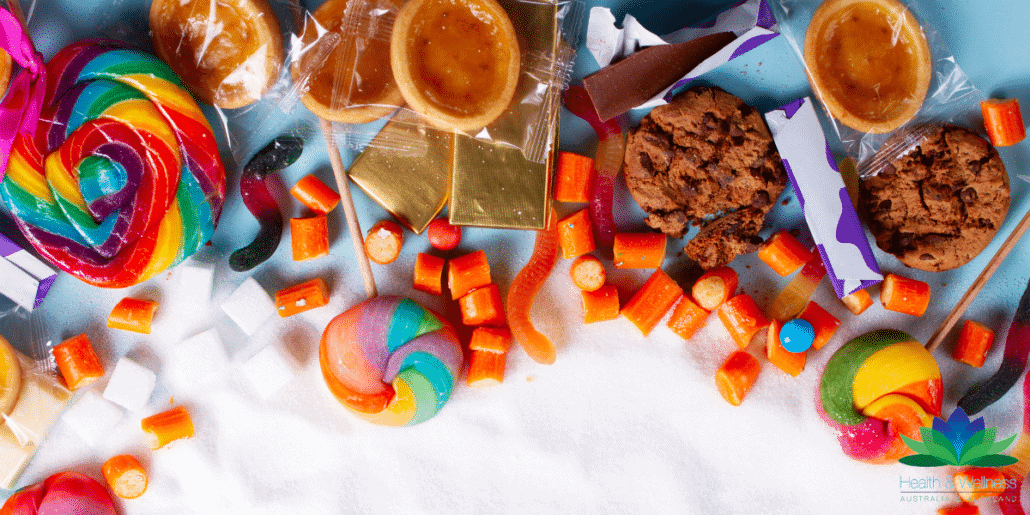
Multiple studies indicate that Western diets containing higher levels of sugar, processed foods and fat contribute to immune dysfunction, tipping the balance to favour the Th2 inflammatory pathway, which can lead to allergies.
On the flip side, protective diets are those that contain good fats, fibre, antioxidants and minimal sugar, such as the wholefood Mediterranean diet.
More specifically, studies have shown that consumption of sweet drinks (containing added sugars) as young as two years old is associated with higher incidence of food allergies, eczema and hay fever. Additionally, high sugar diets are known to specifically increase inflammatory cells in the skin, likely contributing to skin thickness seen in allergic dermatitis.
Higher sugar intake has also been linked with a higher incidence of asthmatic symptoms due to increased allergy markers, reduced immunoprotective factors and therefore an increased susceptibility of the immunity of the airways to allergic inflammation.
Outside of their influence on allergies, the impact of dietary sugars and processed foods on our health are also well documented, shedding light on their effect on inflammation, oxidative stress, alteration of the gut microbiome, gut permeability and reduction in immune function.
Dangerously, excessive sugar intake or a high carbohydrate diet can end up as insulin resistance, a pre-diabetic condition which can contribute to metabolic disease incorporating weight gain, cholesterol imbalance and diabetes, as well as polycystic ovarian syndrome (PCOS), acne and candida.
So, there are multiple reasons beyond sugar cravings and allergies to learn about blood sugar management for wellbeing!
Can you be Allergic to Sugar?
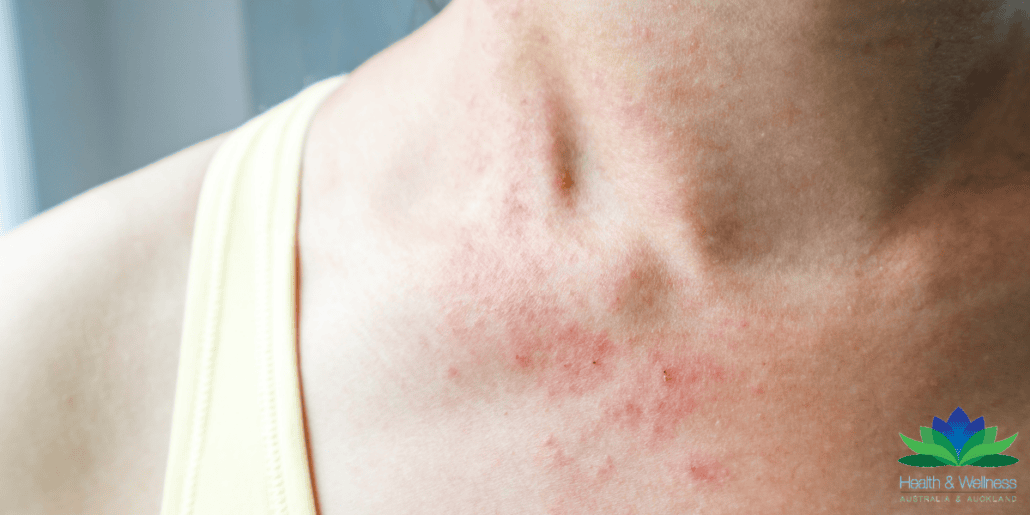
Sugars and starches are actually one of the most common Positive Association Technique (PAT) treatments we do in the clinic, as reactions to sugars and starches in foods can contribute to a variety of symptoms, and skin and digestive issues in particular.
This includes all naturally occurring sugars in foods as well, such as lactose in milk and starches in potatoes and rice, anything with a carbohydrate component.
Many of you may have also heard of FODMAPs, which are essentially sugars that can ferment in our gut and can cause issues for sensitive people.
We usually need to address sugars and starches first when working with multiple food sensitivities, particularly to milk and grain products.
Interestingly, sugar cravings can actually be a sign that you may have an intolerance or sensitivity to sugars.
What causes Sugar Cravings?
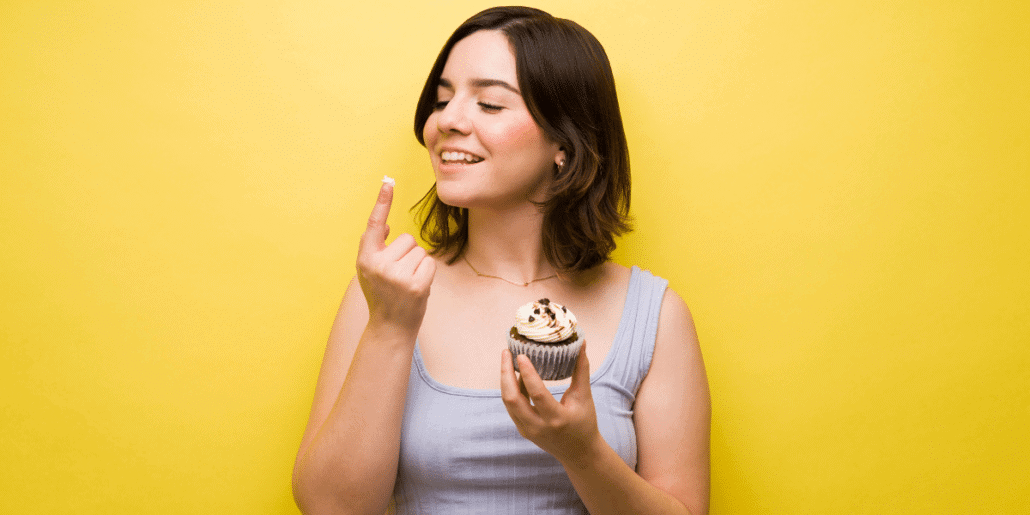
On a very basic level, we crave sugar for energy. When blood sugar drops, fatigue, lack of motivation, irritability and brain fog set in and the body receives signals that we need a new hit to keep going!
The best way to combat this is to aim for stable blood sugar levels, avoiding the spike and the inevitable crash. This is partly why sugar becomes addictive; we can unknowingly create a biochemical requirement for it.
Studies on the addictive nature of sugar have demonstrated similarities in both behaviour and brain changes when comparing addictive drugs and sugar. Sugar triggers the body to release opioids and dopamine, two brain chemicals involved in making us feel good, so when they drop, as does the good feeling and we are left wanting another dose.
Candida could be another reason why you can’t stop thinking about sweets. Candida is a naturally occurring species of yeast which naturally inhabits our bodies at low levels. When it overgrows, we call it an opportunistic infection, one that will gladly take up room if given the chance by an imbalanced microbiome.
Other gut microbiome disruptions, like the presence of parasites, can also leave us craving sugar.
A diet high in sugar (including sweets, starches and alcohol), stress, infection, poor immunity or antibiotic use can all be contributors to this disruption in the microbiome favouring a candida bloom.
As candida thrives in an oxygenated environment, it particularly loves to grow in exposed parts of the body such as the vagina (thrush) or mouth (oral thrush) but can also commonly be found in the colon or small intestine (small intestinal fungal overgrowth (SIFO)).
If you’ve ever had a significant overgrowth of candida, you’ll understand too well the havoc it can wreak – major fatigue, brain fog, mood swings, gut symptoms like bloating and stool changes, and/or local symptoms like itching and discharge. And some say the most annoying of all – irresistible sugar cravings.
They are annoying not just because these sugar cravings feel uncontrollable but because the cruel irony is candida make you do it! Candida thrives on sugar, and it wants to be fed.
This makes avoiding sugar difficult, but also necessary and best done alongside the help of a practitioner like a naturopath who can treat the overgrowth at the same time. Getting on top of a candida overgrowth properly is key to targeting symptoms and preventing them from returning.
Why do we Crave Foods we are Allergic to?
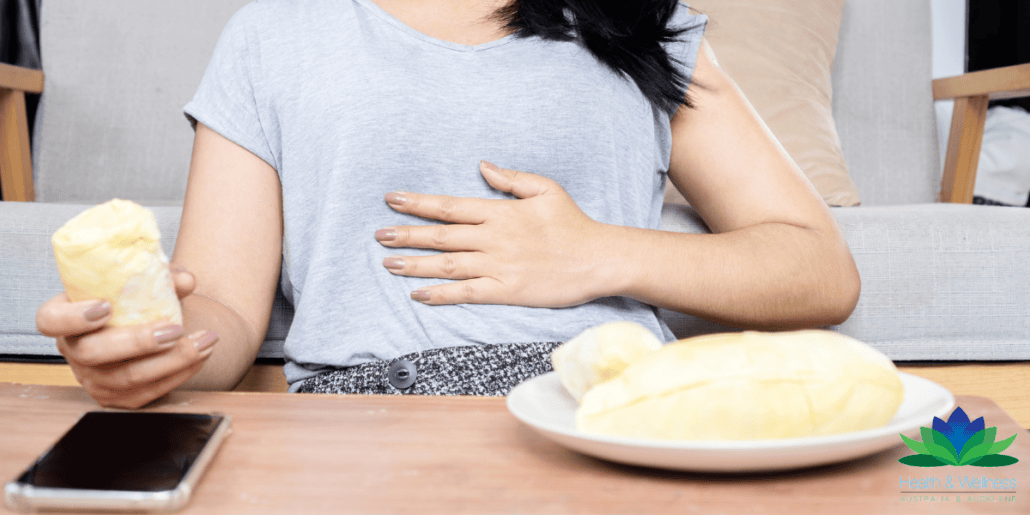
The addictive nature of some foods can be why we can sometimes crave the foods we are intolerant to. Have you ever experienced a reaction to something and you know you should stay away but at times it’s all you can think about? Part of this is often because psychologically we tend to want what we can’t have! However, there may be a physiological basis to it too.
Some foods such as dairy and gluten contain compounds (casomorphins and gliadorphins) known to trigger an opioid response in the part of the brain linked with reward and addiction. This makes us feel so great that removing them from the diet can sometimes create a withdrawal effect, leaving the body craving more. This is why it’s so compelling to polish off the cheeseboard in front of you!
Interestingly, one study suggests that this may also explain why so many people with celiac disease, a known immune response to gluten, don’t experience symptoms. It is possible that this opioid effect could be “masking” the harmful effects of gluten!
Even though it feels like your body is calling for the foods you react to, it’s best not to heed the call. Ingesting foods which cause inflammation can eventually damage the protrusions on the surface of the gut called villi, reducing our absorption of nutrients, increasing our risk of leaky gut and worsening food intolerances.
The Link between Histamine and Blood Sugar
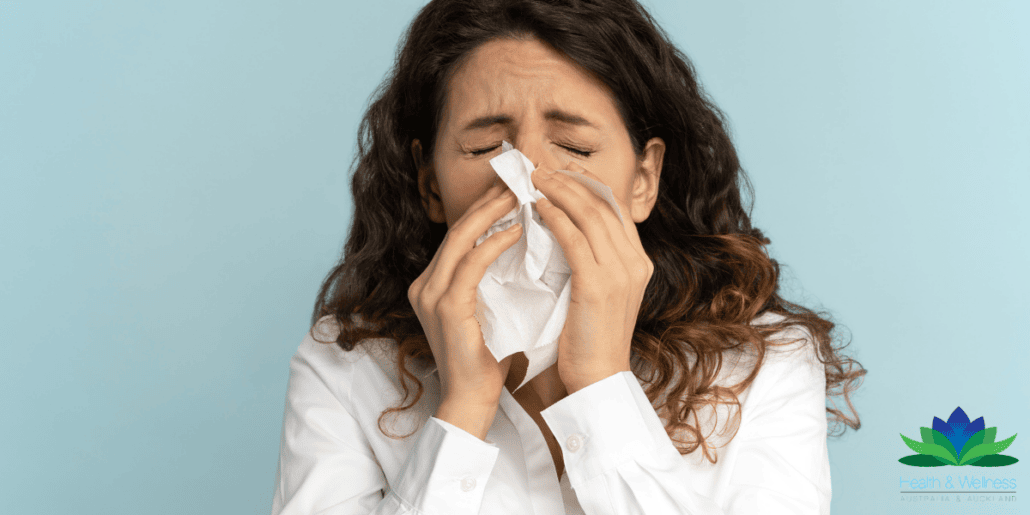
Studies have demonstrated a link between allergies and blood sugar dysregulation, with food allergies shown to increase the risk of diabetes. Airborne allergies and allergic asthma have also been linked to obesity via the mechanism through which insulin resistance develops.
One theory is that when we are exposed to allergens such as dust or pollen, the immune system releases histamine. Histamine is the compound responsible for triggering the inflammation which leads to all the symptoms you feel, like redness, swelling, phlegm and heat.
This also explains the connection between sugar cravings and allergies. As this inflammation increases cortisol levels, a stress hormone which triggers the liver to release glycogen stores as sugar into the bloodstream.
This is a mechanism designed to give us more energy to help us deal with the stress, which can be great short term however chronic stress can contribute to more long term blood sugar imbalances, like insulin resistance and blood glucose spikes and therefore increased sugar cravings.
Managing Sugar Cravings and Allergies
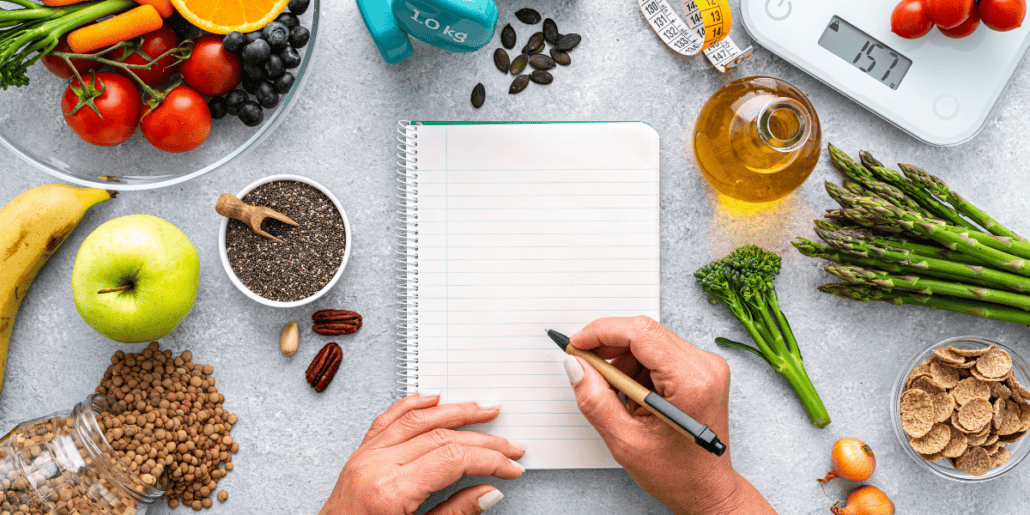
As naturopaths we have many tools in our belt for addressing sugar cravings and allergies. The most sustainable are healthy dietary hacks which set you up for balanced blood sugar levels, which in turn have a beneficial effect on a myriad of health aspects such as energy, moods, metabolic health, skin, hormones, gut health and weight balance.
Research utilising continuous glucose monitors (CGM) to measure daily glucose patterns tells us that spikes in glucose have even greater implications on health than a higher but steady level of blood glucose. This is further reason why maintaining stable blood sugar is priority for health as well as for minimising sugar cravings.
Let’s look at the some of the best options for stabilising blood sugar and reducing cravings.
Dietary Tips
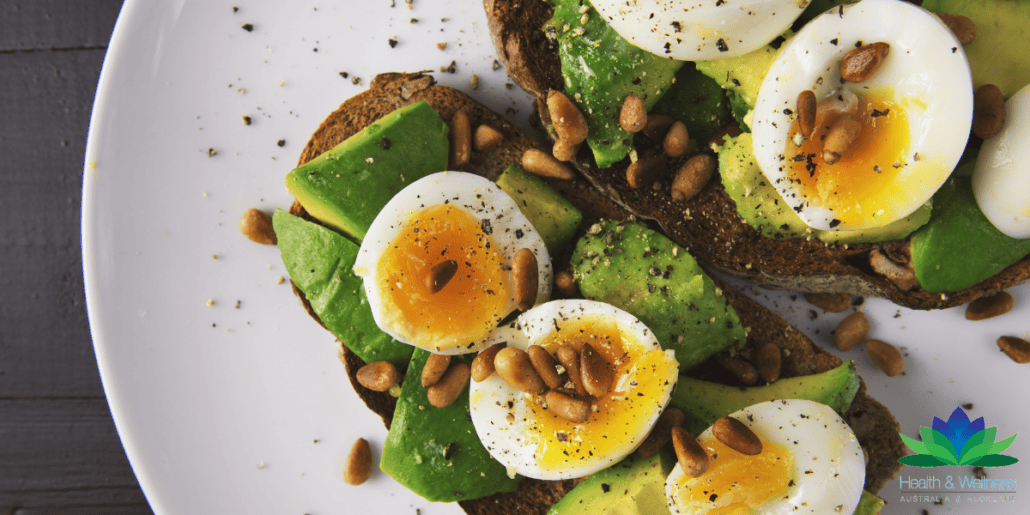
Balance and Order your Meals
When having carbohydrates, combine them with protein, fibre and good fats to help slow the absorption of sugar into the bloodstream. Just like how you shouldn’t drink alcohol on an empty stomach, think of sweets the same way.
Furthermore, one of the best ways to mitigate a blood sugar spike is to eat your food groups in the right order. Beginning with vegetable fibres, then proteins and fats, leaving starches and sugars until last. For example, start with your salad, then meat or eggs, then bread or potatoes and always leave dessert until last.
Also aim for snacks to be protein and good fat based to carry that nice stable blood sugar level between meals. Avoid having sugar as a snack in between meals unless it is following something high in protein or good fats like some nuts or nut butter, tuna, a boiled egg or avocado toast.
Savoury Breakfast
When we are breaking our overnight fast, the body is at its most sensitive to glucose and anything eaten is absorbed into the bloodstream very quickly. This means that sugars eaten at this time can lead to the biggest blood sugar spike in the day, setting you up for a wild rollercoaster of energy and mood swings!
A savoury breakfast based around proteins and/or good fats is the best way to set up your blood sugar for a balanced day. This might include eggs, meat, fish, tofu, nuts and seeds or full fat (not skim) yoghurt, protein powder, cheese, avocado or nut butter.
Carbohydrates can accompany this but they’re not the main event e.g. avoid just having cereal or a pastry, and some carbs are better than others i.e. choose steel cut oats or sourdough, wholemeal or seed breads.
If you want something sweet, whole fruit is the best option as it contains fibre to slow the absorption of sugar into the bloodstream. Whichever sweet treat you might choose, always eat it after your protein and good fats to reduce the impact on your blood sugar levels.
In very last place comes coffee. Even though it might be nice to begin with, if you’re aiming for balanced blood glucose, drinking coffee around 30 minutes after your meal is a better way to reduce the glucose spike.
Start with Vinegar
There has been a lot of emerging research on vinegar, showing that the acetic acid helps us digest carbohydrates more slowly, putting the brakes on the entry of sugar into the bloodstream and therefore helping to reduce a glucose spike.
Drinking 1 tablespoon of vinegar diluted in a glass of water before meals is all that’s required. You can start with 1 teaspoon and slowly build up. The dilution is important to protect our teeth, you can even use a straw if you want to. If drinking vinegar makes you cringe, having it as a salad dressing at the start of your meal ticks all the boxes.
To sweeten the deal even further, apple cider vinegar before meals aids digestion in general and has been shown to reduce cholesterol, encourage weight loss and assist with PCOS.
Hydration
Adequate water intake helps support energy levels, stress management and stable blood glucose. Aim for 2 litres per day, which can include non-caffeinated herbal teas.
Lifestyle Tips

Move your Body
The old adage of a stroll after lunch holds up when we look at the research. Studies show at least a 10 – 20 minute walk after meals significantly reduced blood glucose levels compared to walking at other times of the day. It doesn’t even have to be walking, you can do any type of exercise: have a dance, lift some weights or do squats or yoga.
Quality Sleep
Chronic sleep loss has been linked to poor blood sugar regulation and is known as a risk factor for insulin resistance, weight gain and type 2 diabetes.
It works the other way too, we often crave sugar in the evenings because we are tired. If this is you, aim to embrace the fatigue rather than fighting it, do something very low key like read a novel and then head to bed early. You will likely find as you have earlier sleep for a few nights in a row, the evening fatigue and therefore cravings will reduce.
Manage Stress
You’ve probably experienced craving comfort foods in stressful times, meaning we’re more likely to reach for sweet things when under pressure or upset. Stress also increases blood glucose by increasing cortisol which causes the liver to release stored glycogen as sugar into the bloodstream. When this spike crashes we can crave sugar too.
Carve out some time for mindfulness to help manage stress, even just a few minutes of deep breathing can make a big difference to cortisol levels.
Out of Sight, Out of Mind
Put simply – don’t buy refined sugar. Without it in the house you’re more likely to turn to your alternatives like fruit or homemade cookies or dark chocolate or doing something instead of eating something.
Eat Mindfully
When you do consume something sweet, savour it. Consuming mindfully, with full awareness allows it to be more satisfying and we often need less to hit the spot, as oppose to popping in row after row of chocolate without thinking about, just allowing the taste buds to take over.
Naturopathic Support for Sugar Cravings
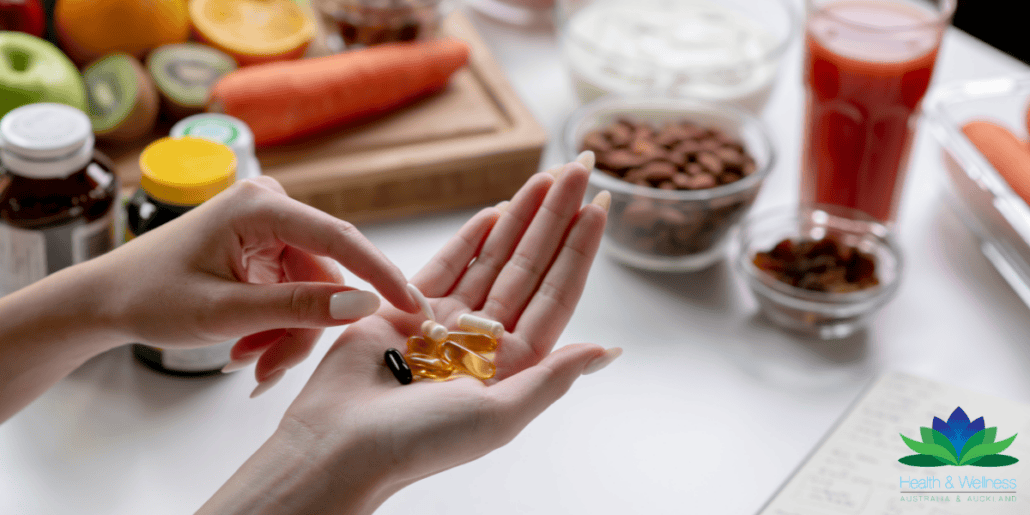
The dietary approaches mentioned are the foundation of minimising sugar cravings. If you’re already doing these and feel like you’re still craving sugar, or if you’re finding it hard to make the changes, then a naturopath can help you look at other approaches and supportive options.
Certain blood tests like fasting insulin, fasting glucose and HbA1c can provide a helpful picture of which supplements and dietary changes might be most beneficial. Comprehensive functional testing such as stool tests can also give us insights into the impact of our diet and gut health on cravings, allergies, microbiome balance and overall wellbeing.
If you suspect candida is the driver of your sugar cravings and allergies, working with a GP and naturopath to diagnose and address this is important. Targeted anti-fungal herbs and probiotics can be used, alongside dietary and supplemental support for the entire microbiome, to help reduce the opportunity for candida to overgrow.
If a candida overgrowth is linked to other conditions such as small intestinal bacterial overgrowth (SIBO) or hormonal imbalances, we can look into these too.
There are select nutrients and herbs which are particularly helpful at regulating blood glucose, inositol being a favourite. Other go-to nutritional supplements include magnesium and chromium, deficiencies of these contribute to dysregulated blood sugar and sugar cravings.
We can also help reduce sugar cravings by reducing histamine production. Nutrients like quercetin, bromelains and vitamin C are great for this.
Herbal medicines such as Cinnamon and Gymnema are excellent for reducing the impact of sugar on our system and easing our craving for sweetness.
Natural Allergy Treatment
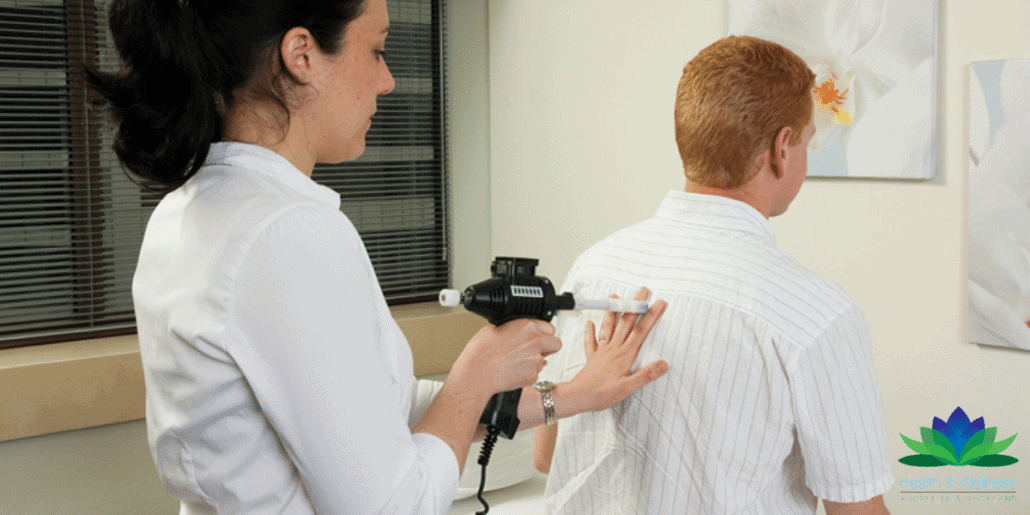
Sugars and starches are actually one of the most common PAT treatments we do in the clinic, as reactions to sugars and starches in foods can contribute to a variety of symptoms, and skin and digestive issues in particular.
At Health & Wellness Australia & Auckland (HWA), we use a technique called muscle testing (or kinesiology) to help pinpoint any reactions to a range food and environmental substances, which may be contributing your symptoms.
Following testing, you work with your practitioner to address reactions to food triggers like sugars, using a acupressure based natural allergy treatment called Positive Association Technique (PAT).
Get in touch
- Call us on 1300 853 023 / 09 479 5997 (NZ) to chat to our friendly staff
- Send us your question HERE
- Request a Free PAT Information E-PACK HERE

Written by Leila DiQuinzio – Melbourne based Naturopath & PAT Practitioner
Leila is a degree qualified Naturopath with over 12 years of experience, and provides Positive Association Technique (PAT) from the multi-modality clinic she co-founded in Northcote, Melbourne named ‘Aēsara Health‘.
Please note that this blog post contains general information only. Always consult your health care professional before changing your diet, starting new supplements or regarding any medical condition.